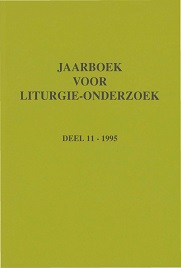'Beeldloze' decoratie in vroeg-christelijke en middeleeuwse kerken
Abstract
Aniconic decoration in Early Christian and mediaeval churches. A Majestas is normally represented in the apse of an Early Christian or mediaeval church; its walls show narrative, usually biblical scenes. Pope Gregory's statement on (narrative) images functioning as books for the illiterate has been repeated many times. In addition to these iconic decorations an aniconic decoration has always existed. Aniconic decoration means here: no 'imagines' (static, icon-like figures; e.g. Majestas), no 'historiae' (narrative scenes), no biblical figures or saints. An aniconic decoration may show Nilotic scenes, hunting scenes, birds, elements from the pastoral idyll, vine branches, acanthus scrolls, trees, shrubs, leaves and flowers. An aniconic decoration can also consist of abstract patterns as embellishment of floors and walls. In this respect attention should be drawn to marble incrustations in Early Christian and Byzantine churches and in early mediaeval churches in Western Europe, as well as the cosmatesque decorations in mediaeval churches in Italy. And finally, there are the mosaics and paintings on walls and ceilings showing architectonic motifs. Aniconic decorations are to be found in the first Christian churches and then again in the churches of the Byzantine iconoclasts. In other churches such motifs are combined with biblical scenes and figures of saints. Contemporaneous texts tell us that 'imagines' have a mystic-cultic function and 'historiae' a pedagogic-didactic function. Texts do not say much about the function of aniconic decorations. It is not likely, however, that such decorations have only a 'decorative' function. Traditionally the interiors of private houses and public buildings were decorated with motifs taken from the world of flora and fauna simply to make these rooms more pleasant. Decorations like these, transferred to sepulchral art and later adopted in churches, create a 'paradisiacal' sphere. Placed in the margins of representations in apses, these motifs complete the image of a celestial paradise. When marble incrustations are described, the variety of colours in the decoration is mentioned. Often the decoration is compared with a flowering meadow. Here, too, a paradisiacal sphere is vaguely intimated. It is apparent from the descriptions that the spectator is impressed by the gleam and radiance, in short by the light coming from the marbles and the other decorations. Light and colour ( colour is a form of light) point, in the context of the sacred room, 'anagogico more' to the light of heaven.


